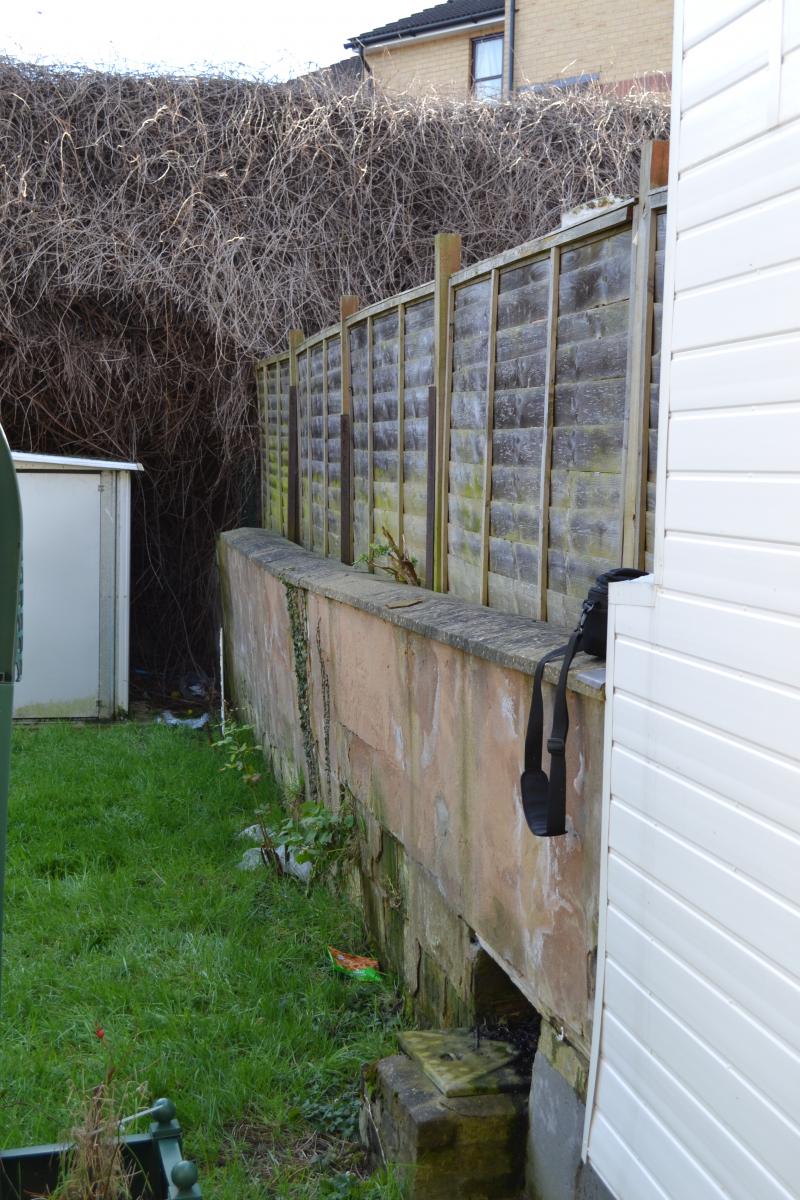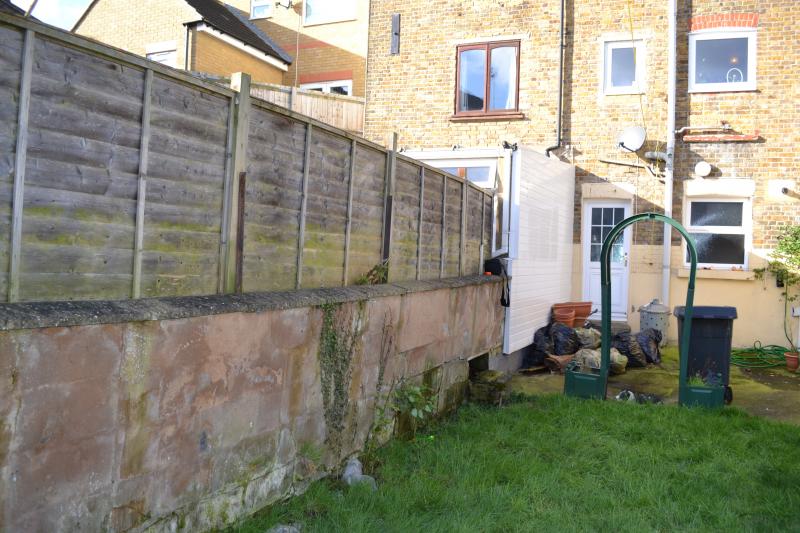Hi all
Long time lurker, first time poster here. Hope someone can help.
I live in an end of terrace house, which is on a slope. Facing the front of the terrace, it slopes downhill to the left and my house is the end on the right, at the top of the hill. At some point in history the owner raised the garden level and built a wall between my and my attached neighbour's gardens. The wall, below with pics from neighbour's garden, is approx 1.2m high and 10.5m long, branching off the end of my conservatory. The earth behind is approx 40cm lower than the top of the wall, so the wall is retaining earth approx 80cm high.
The neighbour complains it is leaning and looks likely to fall - I'm not necessarily agreeing, but want to do something about it. I'm pretty sure I own it since it is aligned with my conservatory wall, and I assume there was no wall before, just a boundary line. I assume it wouldn't have been built over both properties when initially built.
Anyway, a builder has suggested the wall be replaced by concrete posts and slabs, then backfilled with some shingle to help the drainage. It seems there is no drainage in the current wall. My question is really around whether concrete slabs would be strong enough to hold back 0.8m of earth, and is there anything else I need to consider in the job. Not sure yet whether to have a go myself, or employ someone. The builder quoted around £2k for everything.
Any thoughts?
Second part of the questions. Builder seems to think the wall is far from fit for purpose as it is, and obviously so. Is a wall like this something that should be picked up on a HomeBuyer Survey? I know its not a detailed report, but there is no mention at all of a retaining wall, when the report does mention other, lesser, things. It seems they didn't even know the garden was raised. It would have been easy to access the garden next door to take a quick look at the wall... Anyone have experience of complaints procedure etc?
Many thanks
Pav
Long time lurker, first time poster here. Hope someone can help.
I live in an end of terrace house, which is on a slope. Facing the front of the terrace, it slopes downhill to the left and my house is the end on the right, at the top of the hill. At some point in history the owner raised the garden level and built a wall between my and my attached neighbour's gardens. The wall, below with pics from neighbour's garden, is approx 1.2m high and 10.5m long, branching off the end of my conservatory. The earth behind is approx 40cm lower than the top of the wall, so the wall is retaining earth approx 80cm high.
The neighbour complains it is leaning and looks likely to fall - I'm not necessarily agreeing, but want to do something about it. I'm pretty sure I own it since it is aligned with my conservatory wall, and I assume there was no wall before, just a boundary line. I assume it wouldn't have been built over both properties when initially built.
Anyway, a builder has suggested the wall be replaced by concrete posts and slabs, then backfilled with some shingle to help the drainage. It seems there is no drainage in the current wall. My question is really around whether concrete slabs would be strong enough to hold back 0.8m of earth, and is there anything else I need to consider in the job. Not sure yet whether to have a go myself, or employ someone. The builder quoted around £2k for everything.
Any thoughts?
Second part of the questions. Builder seems to think the wall is far from fit for purpose as it is, and obviously so. Is a wall like this something that should be picked up on a HomeBuyer Survey? I know its not a detailed report, but there is no mention at all of a retaining wall, when the report does mention other, lesser, things. It seems they didn't even know the garden was raised. It would have been easy to access the garden next door to take a quick look at the wall... Anyone have experience of complaints procedure etc?
Many thanks
Pav



